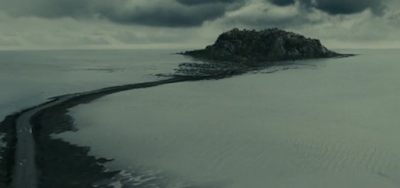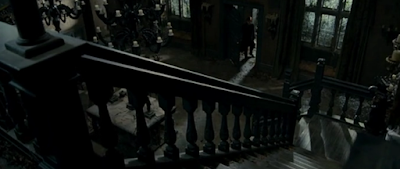Mise-en-scene
Everything within the frame- setting, lighting, costume, framing and composition, colours, expressions, make up
Creation of the mise-en-scene can influence the way the audience reads the scene/it's interpretation of character or situation
Semiology- the study of signs/symbols - helps create depth to the scene.
The causeway makes them seem like they are going to become isolated as the tide comes in
and will make them trapped.
They pass a grave marker, meaning that it symbolises death.
Suggesting he is going there to die
The camera angle is looking up towards the house to make it look more
powerful and threatening and the garden looks over-grown which could suggest no-one had
been there for a long time
This camera angle in this shot is high up when Kipps enters the house to
make him look smaller and weak. This shot also shows the house is really
dull in colour and quite lifeless.
This shot is when The Woman in Black appears behind him and he turns as he
gets a suspicion of someone being behind him and when he looks there is
no-one is there





